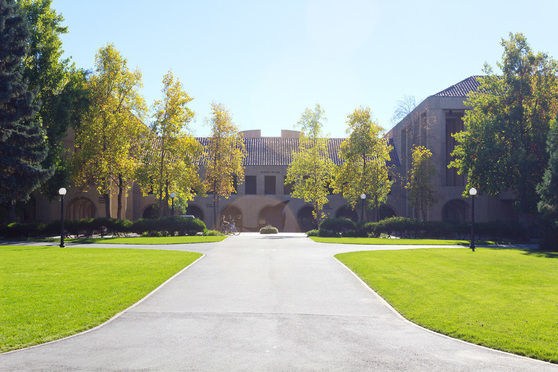Could This Open Source Tool Tell You When Good Law Goes Bad?
This software project by a Stanford computer science student doesn't have a name yet. But it might just be the next thing to shake up the legal research industry.
October 27, 2017 at 02:03 PM
11 minute read

PALO ALTO — Ashkon Farhangi doesn't have a name yet for the software project he's been working on. But it might just be the next thing to shake up the legal research industry.
A Stanford computer science masters student who also works full-time at Google, Farhangi has been developing a machine-learning based “citator.” It's a tool that lets lawyers and legal researchers know when a judicial decision they've found is still good law, or has been overturned.
And here's the kicker: Once it's finished, he's planning to make the software free and open source.
The juggernauts of the legal research industry, LexisNexis and Westlaw, employ hundreds of attorney-editors to offer citator services as a core part of their offerings. Many lawyers are no doubt familiar with the yellow and red “flags” on court opinions found through their research tools, indicating that later rulings have either reversed or somehow affected that decision.
Those services may be well and good for “big, fancy law firms” that can afford the freight, Farhangi said, presenting his software at an event hosted by Stanford's Center for Legal Informatics (CodeX) on a recent afternoon. But because it's so critical for lawyers to know whether they're citing valid cases, Farhangi said he wants to make that same tool more widely accessible. And some in the legal research industry say the project is poised to have a big impact.
“There's no question that the prospect of an open source citator is tremendously exciting and would shift the competitive landscape,” said Pablo Arredondo, co-founder at AI legal research company Casetext. (Farhangi said he got much of the idea from conversations with Arredondo; Casetext is located a stone's throw from Stanford's campus.) “Having that ability outside of the duopoly of Lexis and Westlaw is a very big deal,” Arredondo added.
Ed Walters, CEO of Washington, D.C.-based Fastcase—which has its own algorithm-driven citator called Bad Law Bot—said “I love it,” when asked how the company felt about Farhangi's project. “Anything that makes the traditional legal research services less inevitable is good for Fastcase.”
Farhangi cautions that the program is still a “work in progress.” He's used his algorithm so far on only a limited sample of case decisions pulled from CourtListener, the free court opinion database.

The numbers so far, however, sound promising. Of the decisions that his algorithm flagged as containing “negative treatment” of a prior judicial opinion, it was accurate 89 percent of the time. The algorithm missed 18 percent of the negative treatments in the opinions it scanned.
The program is more sophisticated than the current iteration of Fastcase's Bad Law Bot. Bad Law Bot currently cannot tell when one decision has directly overturned another, but only determines that a case is no longer good law by how it's cited in later decisions. Farhangi's project is able to pull language directly out of a decision to make the call that it is overturning another.
Walters said his company is incorporating algorithms that will catch when a ruling directly overturns another and hopes to make the system even more sophisticated in the future. The thing about Farhangi's tool being open source is that—rather than being a competitor—it could be something that Fastcase could build on, helping it bolster its own citator, Walters noted. The same holds true for any other legaltech startup that may try to enter the space.
That's part of the reason Farghangi's project could have such a disruptive impact on the legal research industry. Providing free access to a citator that's disaggregated from a larger suite of online legal research services could also give attorneys more freedom to pick and choose the services they want.
Still, even with all the advances in machine learning, others in the industry stress that interpreting judicial opinions is notoriously difficult and subjective.
“You're never going to be in a position where that software is sufficiently accurate,” said Itai Gurari, who founded San Francisco-based legal research startup Judicata. “Reading this language is very hard, and it's way beyond the scope of technology today.”
Gurari said his small company has built a version of an algorithmic citator that currently only includes California state court cases. But Judicata still also uses a human review process to categorize how one judicial decision is affecting another. It's a labor-intensive process.
The need to employ humans to review legal decisions for a citator is, of course, a big part of the reason why the two main legal research services tend to be more costly.
Thomson Reuters, which owns Westlaw, sees the human element as essential to ensuring the reliability of its citator service, called KeyCite. According to Leann Blanchfield, vice president of content, strategy and editorial at Thomson Reuters Legal, the company employs some 600 attorney-editors.
“I believe attorney-editors' ability to understand the nuance of the law will always be needed to be a premier product,” said Chris Fenne, the company's director of product management for judicial content and KeyCite. Fenne also rebuffed the notion that Westlaw's legal research services are out of reach cost-wise to smaller firms and solo practitioners, saying that it offers different packages tailored to the needs of the lawyer or firm.
Lexis' citator, called Shepard's Citations Service, also uses attorney-editors in its review process, according to the company's website. Lexis declined to comment for this story through a spokesman.
Farhangi admits his program isn't yet able to identify more nuanced treatment of earlier caselaw. The algorithm puts decisions into binary categories of either being overturned entirely—red-flagged—or not. “In a nutshell, my project provides a simpler output than the output of the big legal research services' citators,” he explained.
But it's a start. And as for why he doesn't plan to commercialize the product? “There's a little bit of altruism there,” Farhangi said.

PALO ALTO — Ashkon Farhangi doesn't have a name yet for the software project he's been working on. But it might just be the next thing to shake up the legal research industry.
A Stanford computer science masters student who also works full-time at
And here's the kicker: Once it's finished, he's planning to make the software free and open source.
The juggernauts of the legal research industry,
Those services may be well and good for “big, fancy law firms” that can afford the freight, Farhangi said, presenting his software at an event hosted by Stanford's Center for Legal Informatics (CodeX) on a recent afternoon. But because it's so critical for lawyers to know whether they're citing valid cases, Farhangi said he wants to make that same tool more widely accessible. And some in the legal research industry say the project is poised to have a big impact.
“There's no question that the prospect of an open source citator is tremendously exciting and would shift the competitive landscape,” said Pablo Arredondo, co-founder at AI legal research company Casetext. (Farhangi said he got much of the idea from conversations with Arredondo; Casetext is located a stone's throw from Stanford's campus.) “Having that ability outside of the duopoly of Lexis and Westlaw is a very big deal,” Arredondo added.
Ed Walters, CEO of Washington, D.C.-based Fastcase—which has its own algorithm-driven citator called Bad Law Bot—said “I love it,” when asked how the company felt about Farhangi's project. “Anything that makes the traditional legal research services less inevitable is good for Fastcase.”
Farhangi cautions that the program is still a “work in progress.” He's used his algorithm so far on only a limited sample of case decisions pulled from CourtListener, the free court opinion database.

The numbers so far, however, sound promising. Of the decisions that his algorithm flagged as containing “negative treatment” of a prior judicial opinion, it was accurate 89 percent of the time. The algorithm missed 18 percent of the negative treatments in the opinions it scanned.
The program is more sophisticated than the current iteration of Fastcase's Bad Law Bot. Bad Law Bot currently cannot tell when one decision has directly overturned another, but only determines that a case is no longer good law by how it's cited in later decisions. Farhangi's project is able to pull language directly out of a decision to make the call that it is overturning another.
Walters said his company is incorporating algorithms that will catch when a ruling directly overturns another and hopes to make the system even more sophisticated in the future. The thing about Farhangi's tool being open source is that—rather than being a competitor—it could be something that Fastcase could build on, helping it bolster its own citator, Walters noted. The same holds true for any other legaltech startup that may try to enter the space.
That's part of the reason Farghangi's project could have such a disruptive impact on the legal research industry. Providing free access to a citator that's disaggregated from a larger suite of online legal research services could also give attorneys more freedom to pick and choose the services they want.
Still, even with all the advances in machine learning, others in the industry stress that interpreting judicial opinions is notoriously difficult and subjective.
“You're never going to be in a position where that software is sufficiently accurate,” said Itai Gurari, who founded San Francisco-based legal research startup Judicata. “Reading this language is very hard, and it's way beyond the scope of technology today.”
Gurari said his small company has built a version of an algorithmic citator that currently only includes California state court cases. But Judicata still also uses a human review process to categorize how one judicial decision is affecting another. It's a labor-intensive process.
The need to employ humans to review legal decisions for a citator is, of course, a big part of the reason why the two main legal research services tend to be more costly.
Thomson Reuters, which owns Westlaw, sees the human element as essential to ensuring the reliability of its citator service, called KeyCite. According to Leann Blanchfield, vice president of content, strategy and editorial at Thomson Reuters Legal, the company employs some 600 attorney-editors.
“I believe attorney-editors' ability to understand the nuance of the law will always be needed to be a premier product,” said Chris Fenne, the company's director of product management for judicial content and KeyCite. Fenne also rebuffed the notion that Westlaw's legal research services are out of reach cost-wise to smaller firms and solo practitioners, saying that it offers different packages tailored to the needs of the lawyer or firm.
Lexis' citator, called Shepard's Citations Service, also uses attorney-editors in its review process, according to the company's website. Lexis declined to comment for this story through a spokesman.
Farhangi admits his program isn't yet able to identify more nuanced treatment of earlier caselaw. The algorithm puts decisions into binary categories of either being overturned entirely—red-flagged—or not. “In a nutshell, my project provides a simpler output than the output of the big legal research services' citators,” he explained.
But it's a start. And as for why he doesn't plan to commercialize the product? “There's a little bit of altruism there,” Farhangi said.
This content has been archived. It is available through our partners, LexisNexis® and Bloomberg Law.
To view this content, please continue to their sites.
Not a Lexis Subscriber?
Subscribe Now
Not a Bloomberg Law Subscriber?
Subscribe Now
NOT FOR REPRINT
© 2025 ALM Global, LLC, All Rights Reserved. Request academic re-use from www.copyright.com. All other uses, submit a request to [email protected]. For more information visit Asset & Logo Licensing.
You Might Like
View All
Law Firms Look to Gen Z for AI Skills, as 'Data Becomes the Oil of Legal'

'A Warning Shot to Board Rooms': DOJ Decision to Fight $14B Tech Merger May Be Bad Omen for Industry

Apple Files Appeal to DC Circuit Aiming to Intervene in Google Search Monopoly Case
3 minute read
Trending Stories
- 1Uber Files RICO Suit Against Plaintiff-Side Firms Alleging Fraudulent Injury Claims
- 2The Law Firm Disrupted: Scrutinizing the Elephant More Than the Mouse
- 3Inherent Diminished Value Damages Unavailable to 3rd-Party Claimants, Court Says
- 4Pa. Defense Firm Sued by Client Over Ex-Eagles Player's $43.5M Med Mal Win
- 5Losses Mount at Morris Manning, but Departing Ex-Chair Stays Bullish About His Old Firm's Future
Who Got The Work
J. Brugh Lower of Gibbons has entered an appearance for industrial equipment supplier Devco Corporation in a pending trademark infringement lawsuit. The suit, accusing the defendant of selling knock-off Graco products, was filed Dec. 18 in New Jersey District Court by Rivkin Radler on behalf of Graco Inc. and Graco Minnesota. The case, assigned to U.S. District Judge Zahid N. Quraishi, is 3:24-cv-11294, Graco Inc. et al v. Devco Corporation.
Who Got The Work
Rebecca Maller-Stein and Kent A. Yalowitz of Arnold & Porter Kaye Scholer have entered their appearances for Hanaco Venture Capital and its executives, Lior Prosor and David Frankel, in a pending securities lawsuit. The action, filed on Dec. 24 in New York Southern District Court by Zell, Aron & Co. on behalf of Goldeneye Advisors, accuses the defendants of negligently and fraudulently managing the plaintiff's $1 million investment. The case, assigned to U.S. District Judge Vernon S. Broderick, is 1:24-cv-09918, Goldeneye Advisors, LLC v. Hanaco Venture Capital, Ltd. et al.
Who Got The Work
Attorneys from A&O Shearman has stepped in as defense counsel for Toronto-Dominion Bank and other defendants in a pending securities class action. The suit, filed Dec. 11 in New York Southern District Court by Bleichmar Fonti & Auld, accuses the defendants of concealing the bank's 'pervasive' deficiencies in regards to its compliance with the Bank Secrecy Act and the quality of its anti-money laundering controls. The case, assigned to U.S. District Judge Arun Subramanian, is 1:24-cv-09445, Gonzalez v. The Toronto-Dominion Bank et al.
Who Got The Work
Crown Castle International, a Pennsylvania company providing shared communications infrastructure, has turned to Luke D. Wolf of Gordon Rees Scully Mansukhani to fend off a pending breach-of-contract lawsuit. The court action, filed Nov. 25 in Michigan Eastern District Court by Hooper Hathaway PC on behalf of The Town Residences LLC, accuses Crown Castle of failing to transfer approximately $30,000 in utility payments from T-Mobile in breach of a roof-top lease and assignment agreement. The case, assigned to U.S. District Judge Susan K. Declercq, is 2:24-cv-13131, The Town Residences LLC v. T-Mobile US, Inc. et al.
Who Got The Work
Wilfred P. Coronato and Daniel M. Schwartz of McCarter & English have stepped in as defense counsel to Electrolux Home Products Inc. in a pending product liability lawsuit. The court action, filed Nov. 26 in New York Eastern District Court by Poulos Lopiccolo PC and Nagel Rice LLP on behalf of David Stern, alleges that the defendant's refrigerators’ drawers and shelving repeatedly break and fall apart within months after purchase. The case, assigned to U.S. District Judge Joan M. Azrack, is 2:24-cv-08204, Stern v. Electrolux Home Products, Inc.
Featured Firms
Law Offices of Gary Martin Hays & Associates, P.C.
(470) 294-1674
Law Offices of Mark E. Salomone
(857) 444-6468
Smith & Hassler
(713) 739-1250






